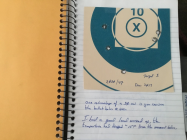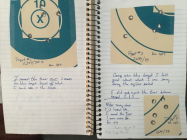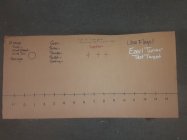Here is a copy from a post in 2012 about using a Bukys tuner and I used it for my Australian made version/copy.
Barrel Tuner - EDPM Rubber Sleeve (Type A)

armamentsbydesign.com.au
Bruno's in Phoenix carries them:

www.brunoshooters.com
I followed the directions from the man himself and it worked exactly right and helped me get the tune with less wasted shots with the load that I knew was a good one anyway.
Had 3 shots from a 6BR at 100 meters in one hole after 34 rds and locked down the tuner and have not touched it since.
Have since had 5 rds at 100 in .254" Ten shots at 300 meters for 100.9 Twenty at 600yds for 200.14 so I know that it works.
"For those of you that are interested in stepping up your Benchrest game here are instructions on how to utilize a Bukys snubber/tuner from the man himself."
How I use my TSI tuners
First a little information about the tuner ---
The ID threads are 7/8 – 32 TPI or .875-32 TPI
I thread about 1” to 1 ¼ “of the muzzle, depending mostly on how I feel that particular day.
DO NOT try to remove the large nut that holds the rubber insert on, -------- It is not intended to be removed ever.
The way I use my tuners.
1. I set the gun up to accept the tuner – (thread the muzzle end of your barrel)
2. Put the rifle together and do not install the tuner
3. Go to the range and tune the rifle as you normally would, make it shoot as good as you can
4. Then on the same day, and in the same conditions, install the Tuner. Use a nice heavy grease on the threads and apply this grease to both the tuner ID threads and the barrel OD threads. ( I use bolt lug lube). Screw it all the way on the barrel till it stops against the shoulder then back if off at least half of a turn and lock it down. This way you only have one way to go while tuning --- you can’t go further on the barrel as you will hit the shoulder quickly.
5. I then load up whatever shot well without the tuner on the gun, and shoot a 3 shot group
6. If the rifle sticks them, (you got lucky) mark that spot with a felt tip or such and shoot it again except I would shoot a 5 shot group, If I wasn’t fooled and it stuck them again I would move the tuner out 1/8 of a turn and shoot it again If it still sticks, I would continue to move the tuner out 1/8 turn at a time and shoot 3 shot groups till it quit sticking.
7. Then I would put the tuner in the middle of where it was sticking, lock it down, and never move it again.
8. If the rifle tries to go out of tune I would change powder charge just as if there was no tuner on the rifle.
9. If the rifle shoots big after installing the tuner on the muzzle, (this is the norm) just shoot 3 shot groups and start turning the tuner out 1/8 turn at a time till you find the area where it will stick them. I find that the rifle will usually come into tune before you have made one complete turn, but no big deal if you have to go a little more than one turn.
10. I try to find an area where the tuner can be turned thru about three 1/8 turn moves and still shoot. As you move the tuner out you will find that there are areas where the rifle will shoot good in a very small spot but when you turn the tuner another 1/8 turn it will go big on you. Try to find a broader area to leave the tuner --- life will be better if you can find an area where you can make the 3 moves and the rifle continues to shoot well.
In my experience with these things, I think, I’ve never seen a barrel that actually did go to shooting better because of a tuner. What I think the tuner dose do is help to keep your rifle in tune thru a larger range. I think that you will see that your rifle stays in tune better thru atmospheric changes than it would without a tuner. ??? I could be all wet about all of this though---
Let me know what you think, after you’ve had a chance to mess with it --- any questions, email or call—713-299-9420
Good luck, Gene
FYI
Just wanted to let all of you know that I posted the tuner instruction sheet and not Gene b. You'll receive a copy instructions with every tuner purchase.
Last edited: Feb 1, 2012















